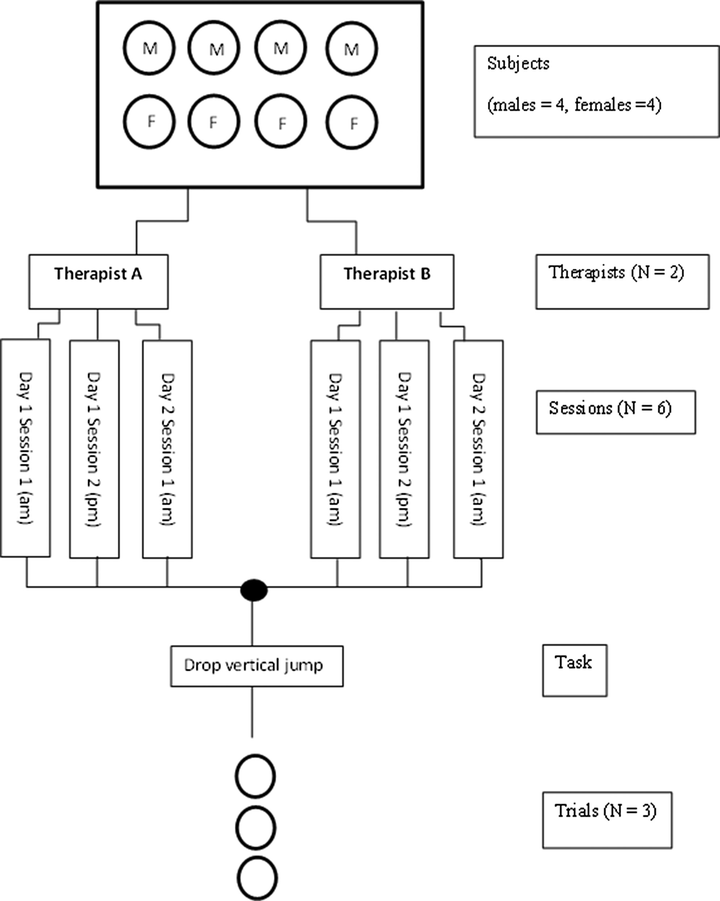How Reliable Are Lower-Limb Kinematics and Kinetics during a Drop Vertical Jump?

Abstract
As drop vertical jumps (DVJ) are widely used as a screening task, the assessment of the reliability of lower-limb biomechanical parameters during DVJ is important. The aim of this study was to assess the reliability of the kinematic and kinetic peak values as well as of the waveforms for lower-limb parameters obtained with the Liverpool John Moores University biomechanical model (LJMU model) during performance of DVJ. Methods: The reliability was analyzed by calculating the intertrial (o¸trial), intersession (o¸sess), and intertherapist (o¸ther) errors of hip and knee joint parameters in a repeated-measures design including two therapists and a total of six sessions. Results: The results showed o¸trial that ranged from 1.1- to 3.5- for all peak kinematic parameters and from 3.6 to 12.9 NIm for all peak kinetic parameters. The o¸sess of the peak values ranged from 1.9- to 5.7- for all angles and from 5.4 to 19.8 NIm for the hip and knee joint moments in all planes. The o¸ther of the peak values ranged from 2.7- to 6.4- for all angles and from 5.8 to 22.4 NIm for all moments. Most of the kinematic and kinetic peak parameters had o¸ther-trial e 2.0- and 4.3 NIm, respectively, suggesting a small extrinsic variability. Furthermore, the entire waveforms also showed a rather high o¸trial relative to other types of variability. Conclusions: The present findings indicated that DVJ kinetics and kinematics show small extrinsic variability. The reported errors are useful for clinical interpretation processes of DVJ performance as screening task for injury risk and rehabilitation outcome taking into consideration the different types of measurement error over time.